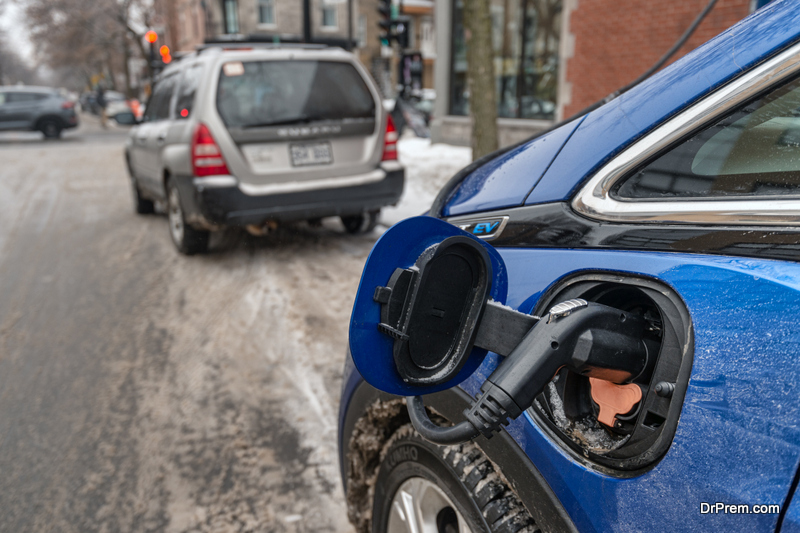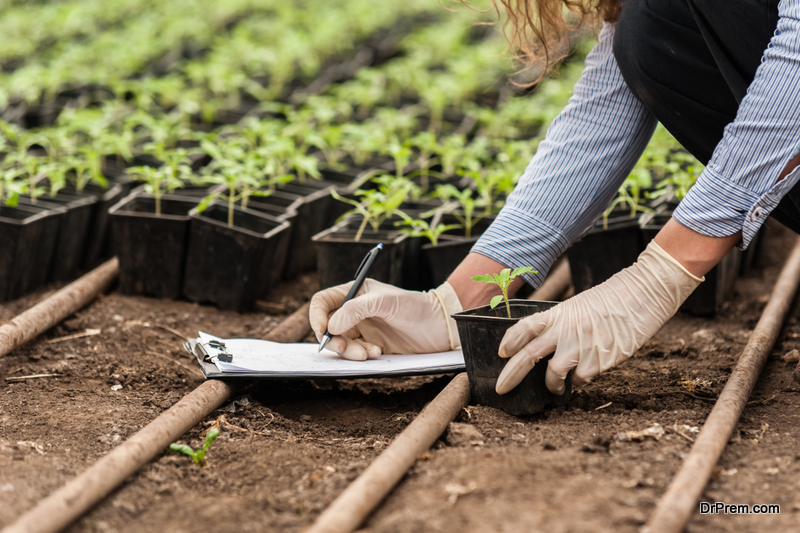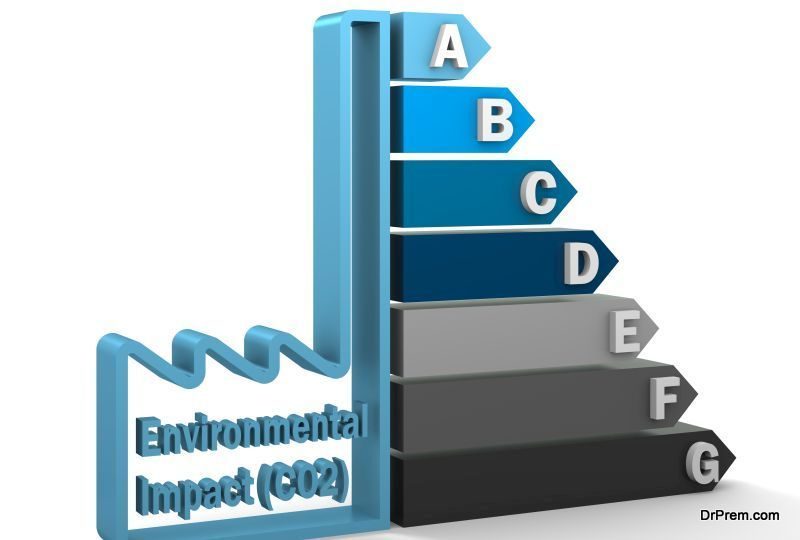What is the future going to be like? This question is uppermost in everybody’s minds. Pollution, global warming, climate change – these issues have come to the forefront now, as we see the effects of the actions of humanity in the past 100 years. We are now scrambling to find new ways to save the planet, and one of them is to develop new technology which is going to reduce the impact on the environment. Take a look at the ways technology can help the environment.
14 ways technology can help the environment
Solar glass
 This is the emerging environmental technology that would do wonders for the environment. The concept of solar glass is that the glass would generate electricity. The name is self-explanatory – the glass would be transparent enough to allow light to pass through, and would also capture the heat of the sun and convert it into electricity.
This is the emerging environmental technology that would do wonders for the environment. The concept of solar glass is that the glass would generate electricity. The name is self-explanatory – the glass would be transparent enough to allow light to pass through, and would also capture the heat of the sun and convert it into electricity.
If all the glass of all the skyscrapers could produce electricity, there probably would be no need to get electricity from the grid! Till now, the hurdle has been that maintaining transparency has led to sacrificing electricity conversion. Once this technology is perfected, we would truly be seeing grid –free buildings, especially with solar panels and use of other renewable energy.
Electric cars
 Emissions from cars is a major contributing factor for global emissions. The alternative is electric cars, which have become better over the years with advanced technology. The cost has reduced and over the years it would become affordable for many people, if not all. The batteries which are not so eco-friendly now, will be advanced too, and this is the kind of technology to help climate change in a positive way.
Emissions from cars is a major contributing factor for global emissions. The alternative is electric cars, which have become better over the years with advanced technology. The cost has reduced and over the years it would become affordable for many people, if not all. The batteries which are not so eco-friendly now, will be advanced too, and this is the kind of technology to help climate change in a positive way.
Smart homes
 Our homes consume a lot of energy. Smart homes have been able to reduce energy bill as well as carbon footprint of homes. Many of the smart appliances and gadgets are designed to use only the optimum amount of energy, with functions such as motion activated lights, fans, HVACs and more. Most of the smart, connected devices can be used in businesses as well, so that this technology can help both homes and businesses.
Our homes consume a lot of energy. Smart homes have been able to reduce energy bill as well as carbon footprint of homes. Many of the smart appliances and gadgets are designed to use only the optimum amount of energy, with functions such as motion activated lights, fans, HVACs and more. Most of the smart, connected devices can be used in businesses as well, so that this technology can help both homes and businesses.
Plastic derived from plants
 Single use plastics have turned out to be the scourge of the earth. Try as we might, it is hard to stop using plastic altogether. People have taken the initiative to reduce plastic use, but there has to be some alternative for it. Plant based plastic could be one of the innovations to protect environment, especially if it could replace most plastic products used today.
Single use plastics have turned out to be the scourge of the earth. Try as we might, it is hard to stop using plastic altogether. People have taken the initiative to reduce plastic use, but there has to be some alternative for it. Plant based plastic could be one of the innovations to protect environment, especially if it could replace most plastic products used today.
Avani Eco, an Indonesian company has been manufacturing bio-plastic from the cassava plant. All bioplastics are not biodegradable, so to ensure that the plastic you are buying is biodegradable, you have to know life cycle of all plastics you purchase.
Going paperless
 Digital mediums have done a lot to reduce cutting down of trees as people are using much less paper today. Files can be stored in the cloud, businesses send bills, newsletters, promotions and coupons through mail. Students take notes in their devices rather than notebooks. Paper is recycled and reused, and with a growing number of people being part of a digital revolution, forests are being saved. Trees can absorb toxic gases and release oxygen, and the greater their number, the greater is the chance for cleaner air. Thus, new technology can help climate change by reducing deforestation.
Digital mediums have done a lot to reduce cutting down of trees as people are using much less paper today. Files can be stored in the cloud, businesses send bills, newsletters, promotions and coupons through mail. Students take notes in their devices rather than notebooks. Paper is recycled and reused, and with a growing number of people being part of a digital revolution, forests are being saved. Trees can absorb toxic gases and release oxygen, and the greater their number, the greater is the chance for cleaner air. Thus, new technology can help climate change by reducing deforestation.
Renewable energy
 Clean energy or renewable energy is now being recognized as one of the important ways to help the environment. Solar energy has advanced enough to be known by people all over the world and gradually being used for many applications. Other renewable materials too are making an impact, and in future will be one of the major sources of energy.
Clean energy or renewable energy is now being recognized as one of the important ways to help the environment. Solar energy has advanced enough to be known by people all over the world and gradually being used for many applications. Other renewable materials too are making an impact, and in future will be one of the major sources of energy.
Environmental technology has the potential to reverse climate change. Fossil fuels which cannot be renewed are also propelling the need for developing energy. Luckily, the new methods of generating energy is much more eco friendly than before. Energy generation included building smart grids which would allow for better distribution of green and clean energy.
Graphene
 This one atom thick miraculous material was discovered in Manchester University in 2004. It is a graphite layer which is so strong an elephant could not crush it, million times thinner than paper, harder than diamond and more conductive than even copper. Graphene is now a material which is researched on intensely and many have predicted that it will have the same effect on human civilization as bronze, iron and steel and silicon.
This one atom thick miraculous material was discovered in Manchester University in 2004. It is a graphite layer which is so strong an elephant could not crush it, million times thinner than paper, harder than diamond and more conductive than even copper. Graphene is now a material which is researched on intensely and many have predicted that it will have the same effect on human civilization as bronze, iron and steel and silicon.
Manchester University student Andre Geim and his colleague Kostya Nosvolev won the Nobel Prize for their work to isolate Graphene into its thinnest layer, which is only one layer of carbon.
Graphene will be used to manufacture many innovations to protect environment, as it can be used to replace many metals and has many applications including water filtration and superconductors which can transfer energy long distance with hardly any loss, photovoltaic uses and more. Graphene may turn out to the important link to turn the planet into a green planet again.
Eco friendly batteries
 Right now, the energy generation from renewable sources has a major hurdle – that of storage. Lithium-ion batteries are bad for the environment and cost about $200 per kilowatt hour. The batteries are quite expensive to buy too.
Right now, the energy generation from renewable sources has a major hurdle – that of storage. Lithium-ion batteries are bad for the environment and cost about $200 per kilowatt hour. The batteries are quite expensive to buy too.
Form energy is a company which is working on a new type of battery which might be a game changer. The aqueous sulfur flow batteries would cost only about 1 to 10 dollars per kilowatt hour. The storage time might increase too, lasting for months. Technologies such as new batteries which have less impact on the environment as well as capture enough energy to last through the rainy season would do wonders for the planet.
Fake meat
 For meat lovers, it’s almost impossible to live without eating meat. The production of meat, especially beef, is terrible for the planet. The world has to reduce consumption of meat, especially beef, as its production leads to deforestation. The animals release gaseous carbon into the atmosphere too. Livestock is responsible for approx 14.5% GHGs, and they need a lot of potable water too. The contaminated runoff pollutes the waterways.
For meat lovers, it’s almost impossible to live without eating meat. The production of meat, especially beef, is terrible for the planet. The world has to reduce consumption of meat, especially beef, as its production leads to deforestation. The animals release gaseous carbon into the atmosphere too. Livestock is responsible for approx 14.5% GHGs, and they need a lot of potable water too. The contaminated runoff pollutes the waterways.
To decrease meat production, and still continue to supply meat, companies have come up with alternatives which taste as good as meat. The meat substitutes are considered to be quite trendy too, and they are being served in popular fast food joints as well. Hopefully, as more people turn vegan or vegetarian, the demand for meat will reduce, and innovations such as this to protect environment will be of great use in the future.
Sharing Economy
 Some new technologies and trends have made it easier to share resources and thus conserve resources. Uber and other companies have made it possible to reach destinations easily without owning a car. Uber and other apps have changed the way we shop, share and travel. Netflix and other streaming services have eliminated the need for DVDs which means less waste being dumped in the landfills.
Some new technologies and trends have made it easier to share resources and thus conserve resources. Uber and other companies have made it possible to reach destinations easily without owning a car. Uber and other apps have changed the way we shop, share and travel. Netflix and other streaming services have eliminated the need for DVDs which means less waste being dumped in the landfills.
Saving wildlife
 Wildlife has been a casualty of humans on the path of progress. The ecology has been disturbed and both land and sea animals, and flora and fauna have suffered. Some scientists are working on new technology to repair the damage done to the environment by technology.
Wildlife has been a casualty of humans on the path of progress. The ecology has been disturbed and both land and sea animals, and flora and fauna have suffered. Some scientists are working on new technology to repair the damage done to the environment by technology.
Existing technology such as GPS, sensors and meters are used in smart collars to track endangered species such as elephants and rhinos. Sound monitoring can prevent harm from predators, poachers and from natural distress. SIM based wearables for animals living near humans can help to prevent human-animal conflicts.
Drones are being used to monitor and track forests for deforestation and wildfires which might destroy forests as well as animals. Advanced computer programs are being used for predictive analysis and collect information about all the species on earth and work in a comprehensive manner to protect them.
Environmental sensors
 This technology is the unsung hero of all the sustainability effort going on in the world. Distributed sensors have been working behind the scenes to provide the data that scientist require in improving the environment. One example, from the 80s, was the tall smokestacks which correlated to high acid rain leading to deforestation. The connection between the three was discovered due to the early pollution sensors which were networked.
This technology is the unsung hero of all the sustainability effort going on in the world. Distributed sensors have been working behind the scenes to provide the data that scientist require in improving the environment. One example, from the 80s, was the tall smokestacks which correlated to high acid rain leading to deforestation. The connection between the three was discovered due to the early pollution sensors which were networked.
Now, sensors which are tiny have been networked and working to identify the water and air quality, tracking acidification, identifying pollutants, capturing data real-time and so on. All these sensors are helping to conserve resources as well as cut down waste.
Carbon capture

Excess of carbon dioxide in the atmosphere is warming the planet. Emerging class of technology is devoted to capturing the carbon from the atmosphere and storing it. It is known as CCS or Carbon Capture and Storage and this will play a major role in the coming years. The technology separated the carbon dioxide from the gas produced in the generation of electricity as well as industrial processes by three methods – pre-combustion capture, post combustion capture as well as oxyfuel combustion.
The collected carbon is transported and stored in the rock formation many thousands of feet underground. The first CO2 capture happened in Switzerland and now startups in Canada and US are developing plants to do the same.
All these technologies can together help to rectify the damage done to the planet and hopefully, help to reverse global warming and bring back the clean air and green planet which we all are entitled to.

